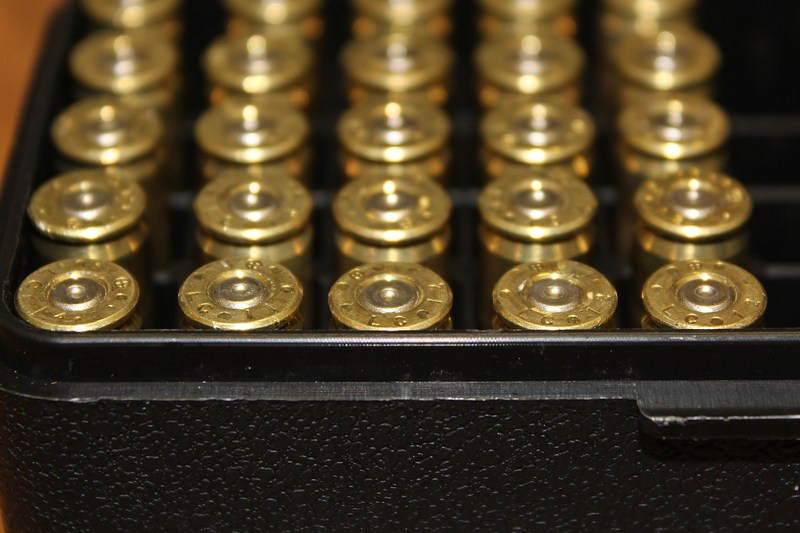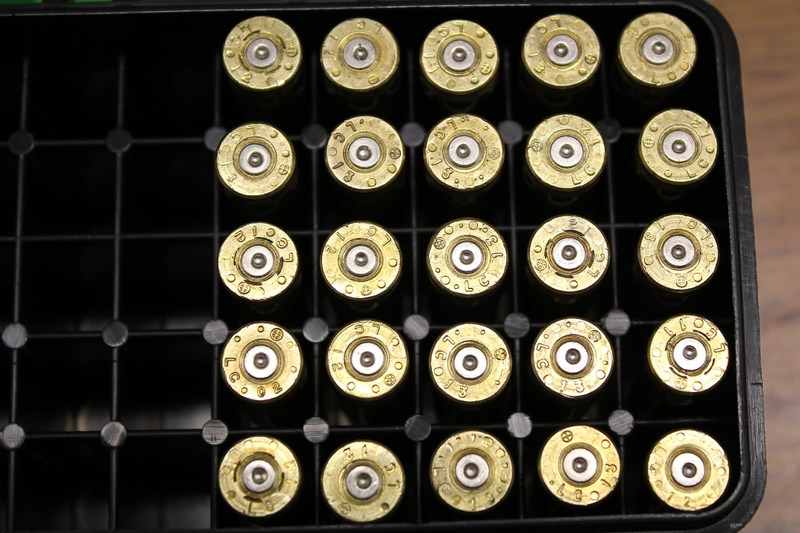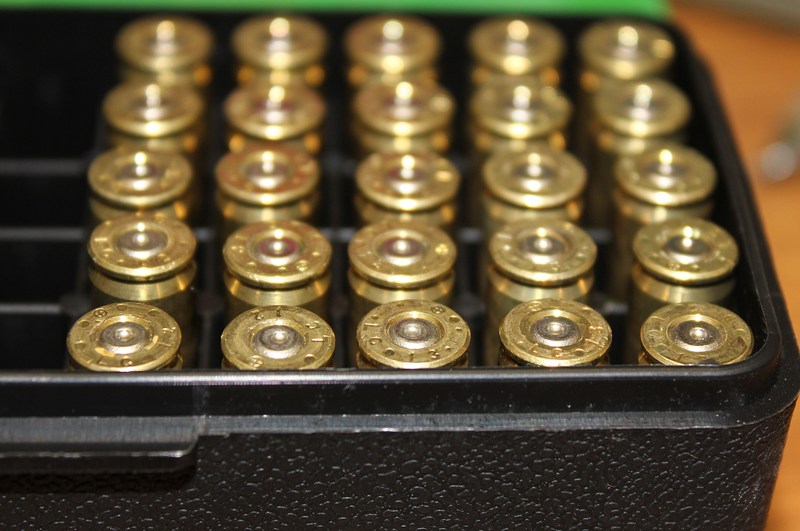I finally ran out of my “lifetime” supply of Remington 7 ½ small rifle primers and couldn’t find any more locally so I got some CCI 400’s instead. I’d read that the 400’s aren’t as slam fire resistant as the 7 ½’s so I decided to see how easy it would be to get a slam fire in my AR. (Anderson upper and bolt, AR Stoner barrel with wylde chamber).
I primed an empty, trimmed, and full length sized LC12 case with one of the 400’s, dropped it into the chamber then pulled the bolt back to the stop and let it fly. The primer was slightly dimpled as expected but no bang. Using that same primed case I repeated the test 50 times in all and no slam fire. The primer dimpled on the first try and after 50 tries the dimple was a bit larger but nowhere close to looking like a fired primer.
Then I tried to get a slam fire with that same primer set slightly above the case base. I used my press to push the primer out a bit then cycled it through again. The result was that the bolt simply bashed the primer back flush into the primer pocket and no slam fire. I tried this 4 more times with the same result.
Next I set the primer out about a 16th of an inch and tried 5 more times to get it to go bang. All 5 times the bolt just set that primer flush.
Then it occurred to me that after 60 abusive chamberings the primer may have been damaged enough by my tender ministrations that it may not fire no matter what, so I flipped off the safety, pulled the trigger and got a satisfying Bang!
Those CCI 400 primers will do nicely!
If I get bored I’ll do the same tests on my loosey-goosey (allegedly) slam fire prone M1 Garand.
I primed an empty, trimmed, and full length sized LC12 case with one of the 400’s, dropped it into the chamber then pulled the bolt back to the stop and let it fly. The primer was slightly dimpled as expected but no bang. Using that same primed case I repeated the test 50 times in all and no slam fire. The primer dimpled on the first try and after 50 tries the dimple was a bit larger but nowhere close to looking like a fired primer.
Then I tried to get a slam fire with that same primer set slightly above the case base. I used my press to push the primer out a bit then cycled it through again. The result was that the bolt simply bashed the primer back flush into the primer pocket and no slam fire. I tried this 4 more times with the same result.
Next I set the primer out about a 16th of an inch and tried 5 more times to get it to go bang. All 5 times the bolt just set that primer flush.
Then it occurred to me that after 60 abusive chamberings the primer may have been damaged enough by my tender ministrations that it may not fire no matter what, so I flipped off the safety, pulled the trigger and got a satisfying Bang!
Those CCI 400 primers will do nicely!
If I get bored I’ll do the same tests on my loosey-goosey (allegedly) slam fire prone M1 Garand.




